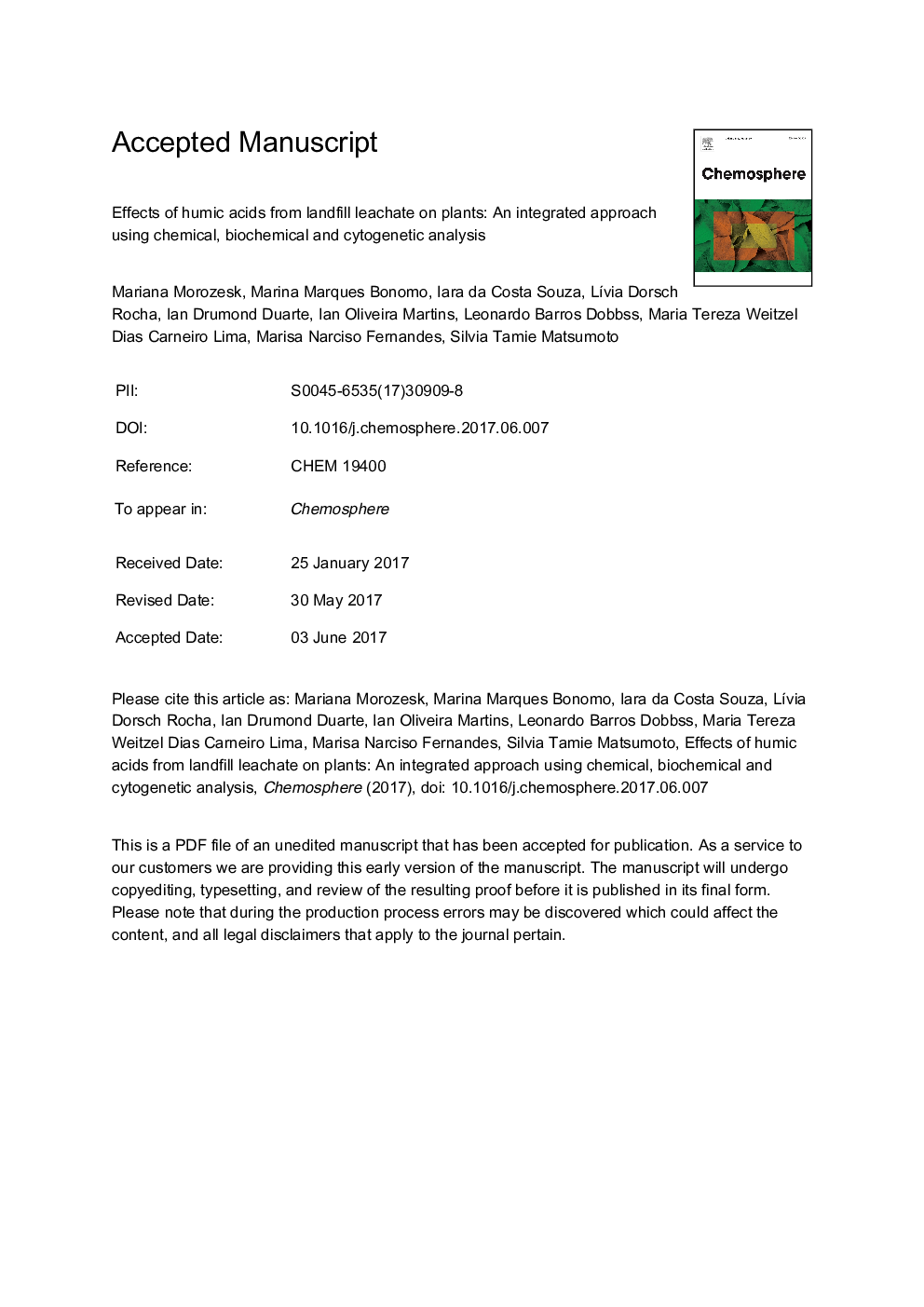| Article ID | Journal | Published Year | Pages | File Type |
|---|---|---|---|---|
| 5746255 | Chemosphere | 2017 | 35 Pages |
Abstract
Biological process treatment of landfill leachate produces a significant amount of sludge, characterized by high levels of organic matter from which humic acids are known to activate several enzymes of energy metabolism, stimulating plant growth. This study aimed to characterize humic acids extracted from landfill sludge and assess the effects on plants exposed to different concentrations (0.5, 1, 2 and 4Â mMÂ C Lâ1) by chemical and biological analysis, to elucidate the influence of such organic material and minimize potential risks of using sludge in natura. Landfill humic acids showed high carbon and nitrogen levels, which may represent an important source of nutrients for plants. Biochemical analysis demonstrated an increase of enzyme activity, especially H+-ATPase in 2Â mMÂ C Lâ1 landfill humic acid. Additionally, cytogenetic alterations were observed in meristematic and F1 cells, through nuclear abnormalities and micronuclei. Multivariate statistical analysis provided integration of physical, chemical and biological data. Despite all the nutritional benefits of humic acids and their activation of plant antioxidant systems, the observed biological effects showed concerning levels of mutagenicity.
Related Topics
Life Sciences
Environmental Science
Environmental Chemistry
Authors
Mariana Morozesk, Marina Marques Bonomo, Iara da Costa Souza, LÃvia Dorsch Rocha, Ian Drumond Duarte, Ian Oliveira Martins, Leonardo Barros Dobbss, Maria Tereza Weitzel Dias Carneiro, Marisa Narciso Fernandes, Silvia Tamie Matsumoto,
